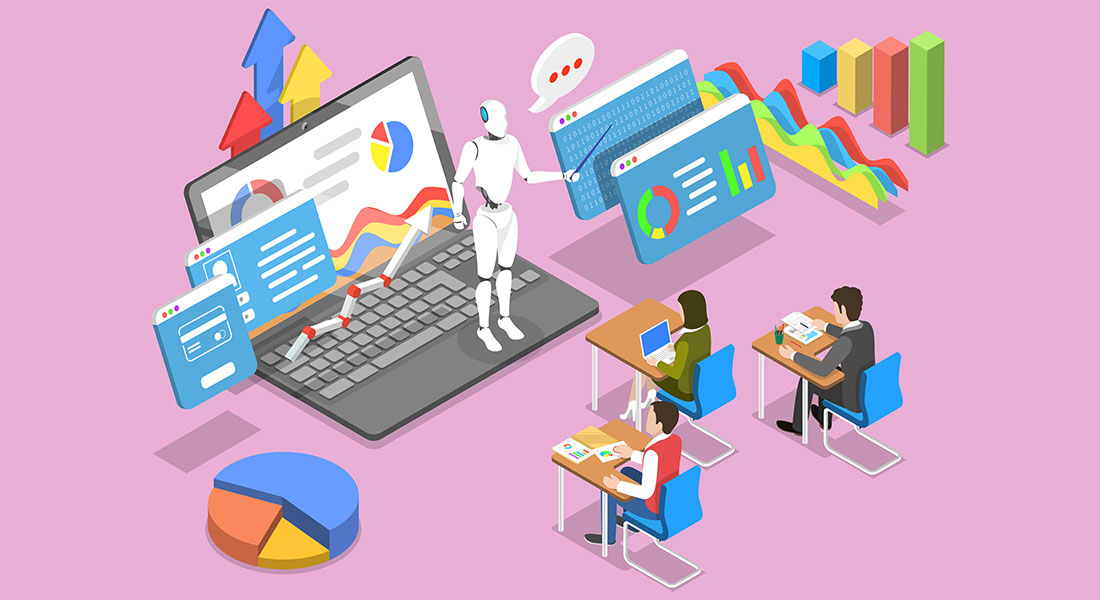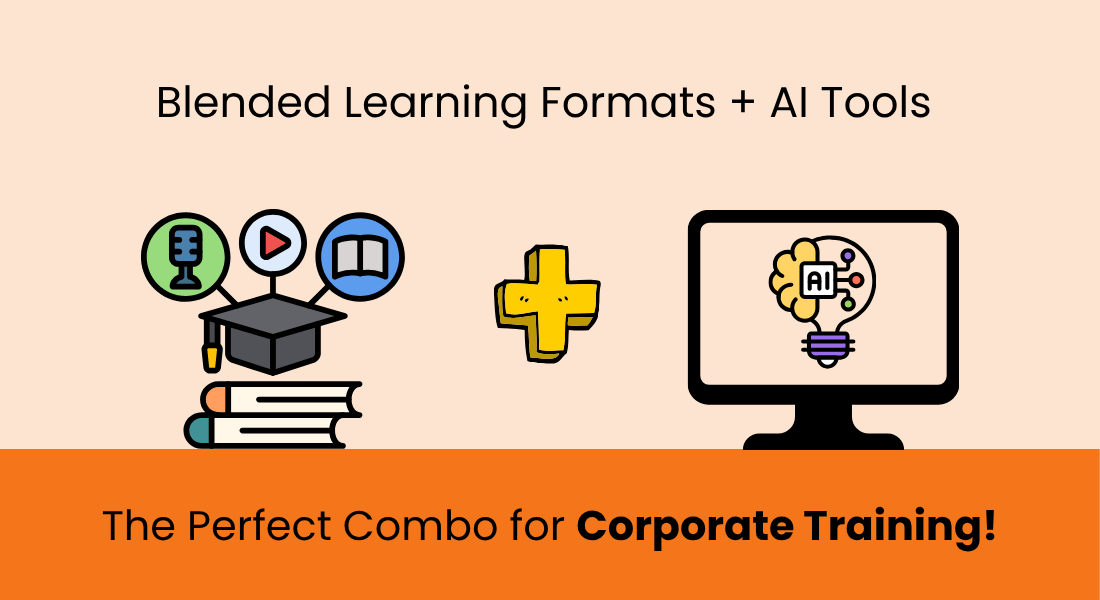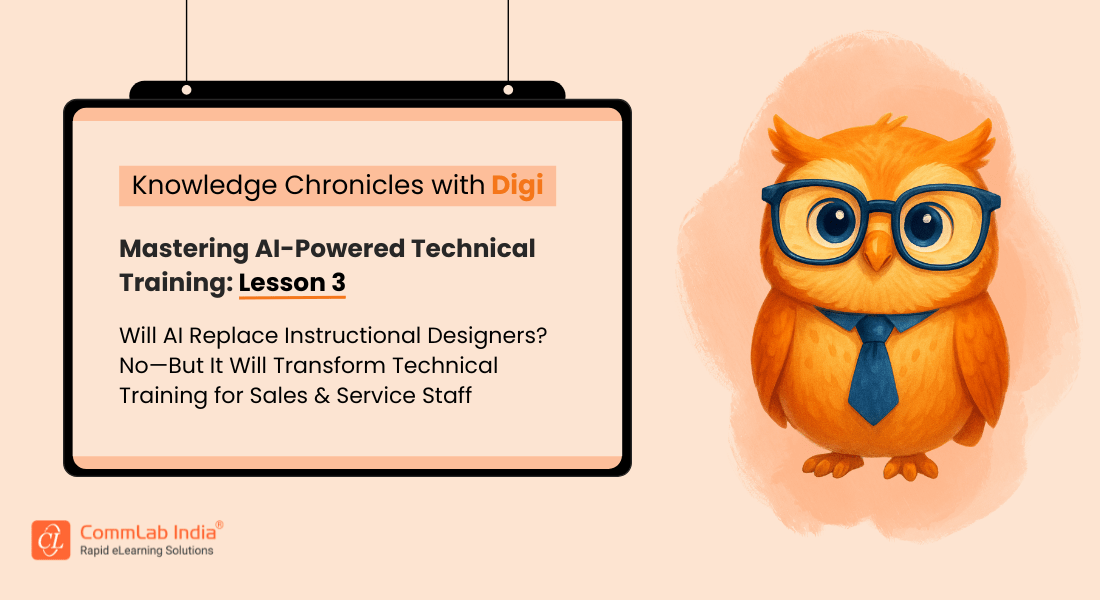The Role of AI in Revolutionizing Learning and Development — Podcast Excerpt

Think about how much effort traditionally goes into creating a training program. You’d need a team of instructional designers brainstorming content, aligning it with learning goals, and then building the materials—slides, quizzes, and activities. This process can take weeks, if not months, to get it just right. Now, imagine being able to design a comprehensive, engaging training program in just a week or two and have it ready to roll out soon after. Sounds like something from science fiction, doesn’t it? But thanks to AI, this is quickly becoming a reality.
Artificial intelligence is transforming how we approach learning and development. With AI, programs can be tailored to individual learners, making the content not only interactive but also highly personalized. It can analyze data from employees’ past performance, learning habits, and skill gaps to create a curriculum that’s truly relevant to them. More than just speeding up content creation, AI enhances the learning experience itself, think chatbots that provide real-time feedback, simulations that mimic real-world scenarios, or even gamified elements that keep learners motivated.
→ Download Now: AI in Corporate Training
In this excerpt from CommLab India’s eLearning Champion podcast, which features experts Josh Cavalier and RK Prasad, who shed light on how AI is redefining corporate training and provide actionable strategies for organizations eager to leverage its potential.
Tune into the podcast for interesting and actionable insights!
Table Of Content
- Understanding AI in Corporate Training
- AI Agents: More Than Just Bots
- Hyper-Personalization: Learning That Moves at the Speed of Business
- The New Learning Ecosystem: Beyond the LMS
- The Human Side: What AI Can’t Replace
- Challenges and Considerations when Using AI in L&D
Understanding AI in Corporate Training
AI's journey began in the 1950s, but it's the recent strides in machine learning, deep learning, and generative AI that have unlocked groundbreaking possibilities. As Josh Cavalier explains, AI now utilizes neural networks and transformers to analyze data in ways previously unimaginable, facilitating hyper-personalized and scalable learning experiences.
The Transformative Role of AI in the ADDIE Model
The ADDIE model in instructional design, involves Analysis, Design, Development, Implementation, and Evaluation.
AI's integration into each of these phases is not merely incremental; it's transformative:
1. Analysis: AI-powered tools can scrape performance data from systems to identify gaps faster than ever. Need to diagnose a dip in sales? AI can tell you if it’s a training issue—or something else.
2. Design and Development: Through AI, content creation is accelerated significantly. AI can generate scripts, develop storyboards, and create interactive elements, all of which reduce the time from concept to implementation.
3. Implementation: AI-powered platforms offer personalized learning across diverse channels, effectively engaging learners by meeting them in their preferred learning environments.
4. Evaluation: With AI, organizations gain access to real-time analytics, enabling them to measure training efficacy and implement data-driven improvements promptly.
AI Agents: More Than Just Bots
An AI agent is much more than a chatbot—it's 95% software engineering. These intelligent entities can reason, plan, and coordinate tools and models to execute complex learning workflows.
Imagine an agent that:
- Conducts SME interviews
- Generates scripts
- Sends them to video platforms
- Pushes the content to learners
- Collects feedback, all autonomously
While still emerging, this vision isn’t far off. Companies like OpenAI and Google are already laying down the tech foundations.
Action tip: Familiarize yourself with agent frameworks (like OpenAI’s tool integrations or Google's Agent Protocol). This is your next frontier in AI for corporate training.

AI in Corporate Training
Partner, Not Replacement
- AI in Corporate Training
- AI Toolkit for Super-charged Learning
- Challenges to Consider with AI Implementation
- And More!
Hyper-Personalization: Learning That Moves at the Speed of Business
AI's potential to personalize training is a game-changer. By tailoring content to individual needs and preferences, AI ensures that training is relevant and effective. For instance, a sales representative could receive bespoke learning modules based on their sales performance and client interactions, delivered directly to their mobile device.
The New Learning Ecosystem: Beyond the LMS

Traditionally, we boxed our learning into LMSs. But AI breaks down those barriers. With xAPI, we can track and report learning from anywhere—emails, apps, and chatbots. Learning can now live where work happens.
Action tip: Use AI to create microlearning embedded in Microsoft Teams or Slack and monitor engagement.
The Human Side: What AI Can’t Replace
AI excels at speed, scale, and structure but it still lacks intuition, empathy, and creativity. That’s where you come in.
Josh calls it “the humanization of work.” While machines handle repetitive tasks, humans will focus more on coaching, mentorship, and strategic thinking.
Introducing the Human-Machine Performance Analyst
The role of instructional designers is evolving alongside AI. The concept of the Human-Machine Performance Analyst, a role dedicated to optimizing the synergy between human expertise and machine intelligence. This involves assessing both human and AI performance to facilitate seamless collaboration and continuous improvement.

Challenges and Considerations when Using AI in L&D
AI has incredible potential, but it’s not without its challenges. For organizations, it’s not just about adopting the technology, it’s about doing it responsibly. One big hurdle is ensuring that the data AI relies on is accurate and unbiased. If the data isn’t solid, the results can be misleading or even harmful. Then there’s the ethical side of things. How do we make sure AI is used in ways that genuinely help people and don’t exploit them? That’s a tough but crucial question.
Another important consideration is keeping humans in control. AI can do amazing things, but at the end of the day, people need to feel confident that they’re the ones steering the ship, not the other way around. Building trust in AI systems isn’t just a nice-to-have; it’s a must. People need to know these systems are reliable and working in their best interests in mind. That means transparency, accountability, and making sure there’s always a human touch in the process.
The Path Ahead
It’s not about replacing human creativity but amplifying it, allowing L&D professionals to focus on strategy and innovation rather than the nuts and bolts of course design. This transformation is redefining the potential of workplace training, making it more agile, efficient, and future-ready.
Are you ready to harness the power of AI for your workforce? Discover how AI can streamline reskilling efforts and revolutionize your approach to corporate training. Download our free eBook, and inside, you’ll find an exclusive AI toolkit packed with strategies for design, development, and beyond. Get going!!






